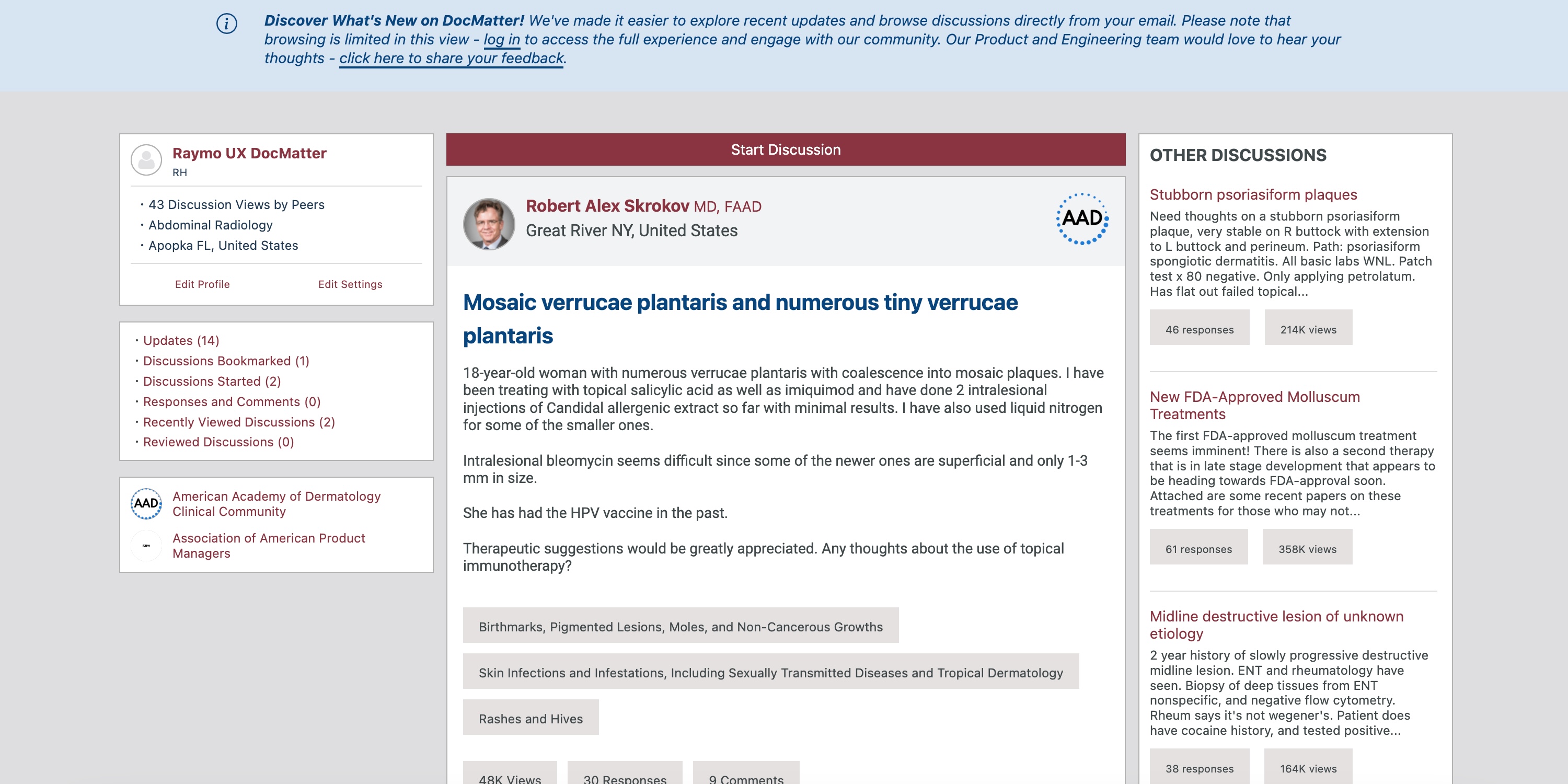Driving User Growth
Enhancing DocMatter Engagement
DocMatter

Project Overview: Optimizing User Engagement in DocMatter
The Problem: DocMatter was designed to facilitate active, real-time discussions and shared task management among doctors. However, a significant challenge emerged: doctors were not leveraging DocMatter for genuine collaboration and conversation. Instead, they were primarily using it as a one-way "email updating system" – a passive method to catch up on information, rather than actively participating in discussions, sharing insights, or moving tasks forward within the platform. This misuse led to fragmented communication, delayed decision-making, and underutilization of DocMatter's core collaborative functionalities.
Goal: Increase user engagement, feature adoption, and overall productivity within DocMatter by identifying and addressing key usability and workflow challenges that prevented doctors from engaging in active collaboration and conversation.
My Role and Responsibilities
As a key contributor to this project, operating within a small, agile team that included a Product Owner and two developers, I wore multiple hats. My involvement extended beyond design and project management, playing a significant role in product strategy. Throughout the entire lifecycle, from initial research to implementation and analysis, my responsibilities included:
- Product Strategy & Vision: Actively contributed to defining the product roadmap, identifying strategic opportunities for DocMatter's evolution, and ensuring proposed solutions aligned with overarching business goals and user needs.
- User Research & Data Analysis: Conducting qualitative and quantitative research to understand user behavior, collaboration patterns, and pain points within DocMatter.
- Problem Identification: Pinpointing specific usability issues, workflow bottlenecks, or missing functionalities affecting collaboration and productivity.
- Solution Brainstorming & Ideation: Collaborating with cross-functional teams (designers, developers, product managers) to generate potential solutions and new features.
- Design & Prototyping: Creating wireframes, mockups, and interactive prototypes for proposed changes and new features.
- User Testing: Facilitating usability tests to validate design decisions and gather feedback on proposed improvements.
- Implementation Support: Working closely with developers to ensure accurate and effective implementation of features.
- Performance Monitoring & Iteration: Tracking key metrics post-launch and suggesting further optimizations based on user data and feedback.
Research & Strategy
Key Research Steps:
- Analyzed user behavior data to identify where drop-offs occurred.
- Conducted competitive research on email-to-platform journeys.
- Partnered with marketing & analytics teams to align PDP goals with campaign strategies.
- Defined success metrics: Increase email-driven platform visitors & reduce bounce rates.
The Solution
Key Enhancements:
- Designed a dedicated PDP as the primary landing experience for email traffic.
- Ensured the PDP was mobile-friendly, scannable, and conversion-focused.
- Implemented clear CTAs, engaging visuals, and structured content to boost engagement.
- Optimized for SEO & page load speed to improve retention.
- Worked with developers to integrate tracking & analytics for measuring success.
Implementation & Collaboration
- Built interactive prototypes in Figma and iterated based on stakeholder feedback.
- Collaborated with developers to ensure a seamless transition from email to PDP.
- A/B tested different layouts, CTAs, and messaging to maximize engagement.
Results & Impact
Key Outcomes:
- Doubled platform visitors from email campaigns – from 6.4K to 13.7K per month.
- Improved engagement metrics, with users spending more time on the platform..
- Reduced bounce rates by ensuring content relevance & clear navigation..
- Provided a scalable framework for future email-driven campaigns.
Lessons Learned & Next Steps
What Worked:
- Creating a clear email-to-platform journey significantly boosted engagement.
- A data-driven approach ensured UX/UI decisions were impactful.
Challenges:
Balancing marketing needs vs. UX priorities required close collaboration.
Next Steps:
- Further optimize the PDP using heatmaps & user feedback.
- Explore personalized PDP experiences to tailor content for different audiences.
